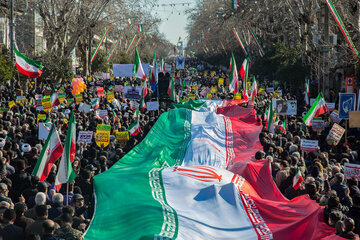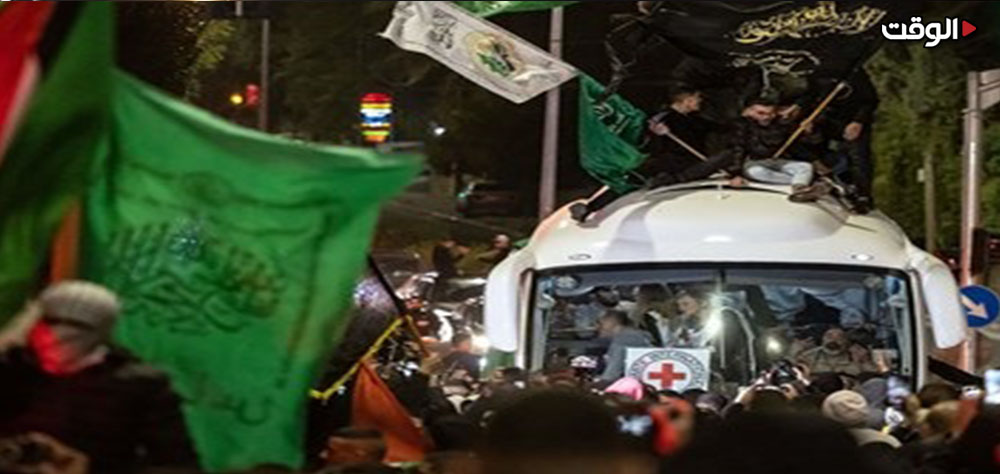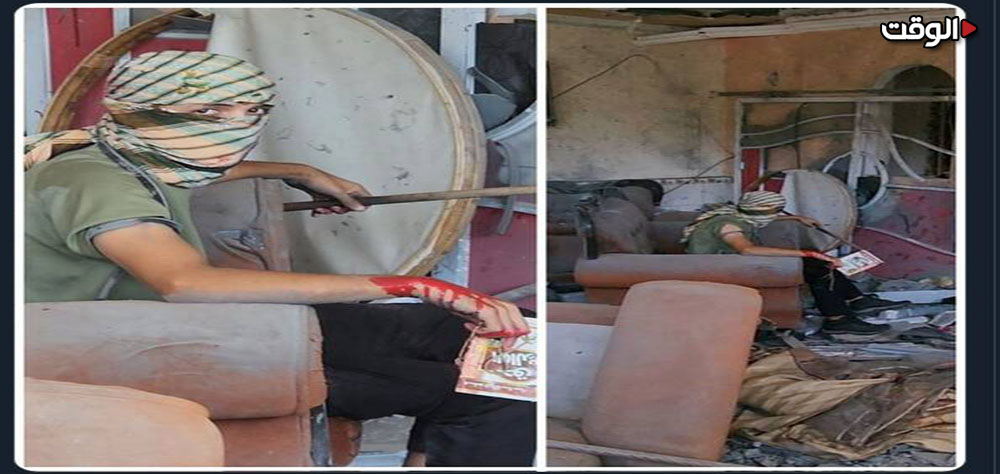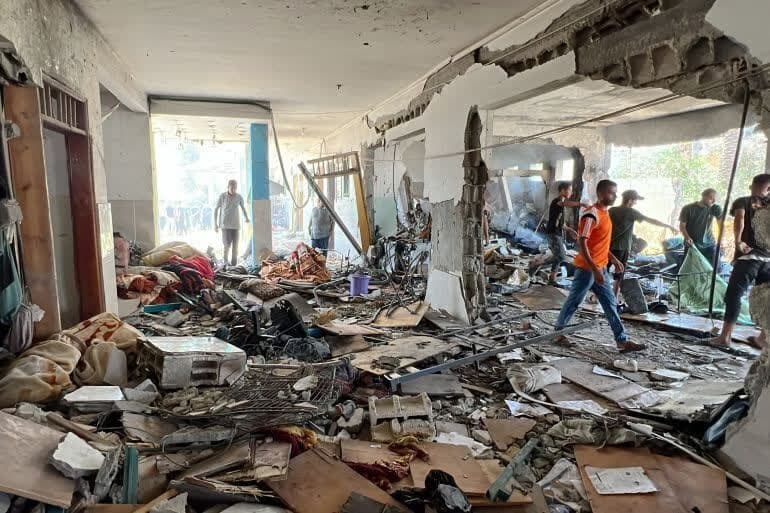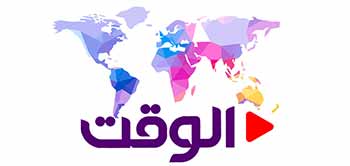Alwaght- Asef Bayat in his book "Life as Politics: How ordinary people changed the Middle East" defined social Non-movements as:
"In general, Non-movements refers to the collective actions of non-collective actors; they embody shared practices of large numbers of ordinary people whose fragmented but similar activities trigger much social change, even though these practices are rarely guided by an ideology or recognizable leaderships and organizations."
Accordingly, social Non-movements have come to represent the mobilization of millions of the subaltern, chiefly the urban poor, women, and youth who encapsulate the discreet and prolonged ways in which the poor struggle to survive and to better their lives by making quiet and long term progress. Having different demands, they share a goal: "to change the status quo". Self-immolation of Mohammad Bu Azizi in Tunisia was a typical social non-movement that resulted in the Islamic Awakening.
Social Non-movements embody the protracted mobilization of millions of detached and dispersed individuals and families who strive to enhance their lives in a lifelong collective effort that bears few elements of pivotal leadership, ideology, or structured organization. Examples of social Non-movements are found in Egypt, Turkey and Europe. Cairo elite lament about the ‘invasion of fallahin’ (peasants) from the dispersed Upper Egyptian countryside, and Istanbul elite warn of the encroachment of the ‘black Turks,’ meaning poor rural migrants from Anatolia, who they say, have altogether ruralized and transformed the social configuration of “our modern cities.” In a strikingly similar tone, white European elites express profound anxiety about the ‘invasion of foreigners’, Africans, Asians, and in particular Muslims, who they see as having overwhelmed Europe’s social habitat, distorting the European way of life by their physical presence and cultural modes, their Hijab, mosques and minarets.
In addition to the poor masses in The West Asia and European settlers, we are witness to presence of women who are trying to maintain their faith and become more social. The social Non-movements of women in Saudi Arabia are among the examples that want to call for change in the status quo in Saudi Arabia, and are trying to cast themselves as public activists.
Another important component of social Non-movements is young people who, for instance, had a stronger presence at the recent developments in Egypt. Very often "youth movements" are erroneously conflated with and mistaken for "student movements" or "youth chapters" of this or that political party or political movement. Broadly speaking, a youth Non-movement is about reclaiming youthfulness. Young people are an opportunity for all groups, and can even draw the attention of the Salafis and the secularists. In fact, youth Non-movements are an opportunity for all, as they embody a collective challenge whose central goal consists of defending and extending youth habitus, defending and extending the conditions that allow the young to assert their individuality, creativity, and free them from anxiety over the prospect of their future. Youth Non-movements in Bahrain, Egypt, Yemen and other countries in the West Asia have provided an unmatched opportunity for all groups, as the young people in these countries enjoyed an enormous constituency, with two-thirds of the total population being under thirty years of age. Youths forged collective identities in schools, colleges, urban public spaces, parks, cafés, and sports centers; or they are connected with one another through the virtual world of various media to express collective dissent. For example in Saudi Arabia, a new middle class is emerging through the Internet, as the chief executive manager of Twitter recently said that the highest growth rate of its new subscriber were from Saudi Arabia. As in a short time, the number of its subscribers from Saudi Arabia has increased thirty fold. Besides, the number of Saudi nationals returning to Facebook and other social networks has dramatically increased. In present-day Saudi Arabia:
- There are 11.4 million Internet users (40 percent of the population). Saudi Arabia has the largest number of Internet users in the West Asia .
- There are 4.5 million users on Facebook from Saudi Arabia (17 percent of the population).
- 77 percent of the 5 million Saudi male and female students are on Facebook.
A major part of the news circulating among the Saudi people (students, elites, etc.) is the news item posted on Facebook and Twitter pages.
These media were so influential on public opinion in Saudi Arabia that after the events of the Islamic Awakening in the region, King Abdullah offered $ 150 billion to buy Facebook. Besides, Prince Alwaleed Bin Talal of Saudi Arabia is the biggest shareholder of Twitter. Therefore, social Non-movements in Saudi Arabia have given rise to three socio-political protest movements in the Saudi society which follows: a) liberal intellectuals; b) the reformist Islamists that advocate new interpretations of the traditional religion; and c) the Shiite reformist movement.
In general, the policy of the youth is not based on protest as it is among women and the poor, rather their policy is based on practice, politics of seeking a solution through action. In this condition, no political protests are staged in order not to raise the sensitivity of security institutions. Nevertheless, with non-governmental practical demands, Non-movements lay the ground for social changes, and are changed into genuinely revolutionary movements.
The logic of action in social Non-movements
In general, the features of social Non-movements are as follows:
- Non-movements , tend to be action-oriented, rather than ideologically driven; they are overwhelmingly quiet, rather than audible;
- Whereas in social movements leaders usually mobilize the constituencies to put pressure on authorities to meet their demands, in Non-movements actors directly practice what they claim, despite government sanctions, thus, theirs is not a policy of protest, but of practice.
- Unlike social movements, where actors are involved in mobilization and protestation, the Non-movements are made up of practices that are merged into the ordinary practices of everyday life (daily practices of women, youth and the poor)
- These practices are not carried out by small groups of people acting on the political margins; rather, they are common practices of everyday life carried out by millions of people who albeit remain fragmented.
In fact, the power of Non-movements rests on the power of big numbers, that is, the consequential effect on norms and rules in society of many people simultaneously doing similar, though contentious things. A large number of people acting in common have the effect of normalizing and legitimizing those acts that are otherwise deemed illegitimate. And this is what we have been witness to in various regional developments.
- Taliban No More on Russian Terror List: What’s Kremlin Seeking?
- IAEA Chief Describes Second Round of Iran-US Nuclear Talks as Positive
- Araghchi Dismisses Israel’s Threats, Asserts Tel Aviv Will Never Be Able to Attack Iran
- Israel Kills 54 in Gaza Within 24 Hours as Netanyahu Pledges to Press on With War
- US Weapons Convoys Cross from Syria into Iraq’s Ain al-Asad Base
- US Airstrikes Kill Three, Wound Several in Sana’a and Other Parts of Yemen
- Riyadh Wants Stronger Ties with Tehran after Defense Minister Visit: Expert
- What’s Russian Role in Iran-US Nuclear Talks?
- A Third Round of Talks Between Iran and The US Is Anticipated in The Near Future
- Journalist Tamer Mekdad and His Family Lost Their Lives in An Israeli Airstrike on Their Home in Gaza
Editor's Choice
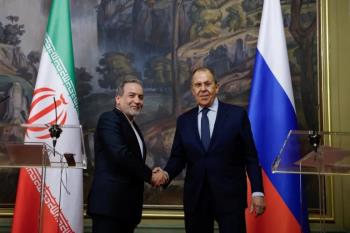
What’s Russian Role in Iran-US Nuclear Talks? Russia enjoys considerable influence and can facilitate a deal between Washington and Tehran.
Historic Jump in Iran-Iraq Energy Partnership The two countries are showing a great will to engage in deeper energy partnership to neutralize US pressures.
Turkic World Project Falling, Dealing Blow to Erdogan’s Neo-Ottomanism Erdogan may need to review his thoughts about Turkic World as Turkic Central Asian republics choose Europe over Ankara.
What’s behind Netanyahu’s Diplomatic Failure in the US Trump this time appears to have understood that further alignment with Netanyahu will cost the US dearly.
Aspects of Tajikistan-Kyrgyzstan-Turkmenistan Agreement The trilateral agreement is meant to eliminate disputes and pave the way for regional economic prosperity.
News

IAEA Chief Describes Second Round of Iran-US Nuclear Talks as Positive
The head of the International Atomic Energy Agency (IAEA) called the second round of indirect Iran-US nuclear talks positiveAraghchi Dismisses Israel’s Threats, Asserts Tel Aviv Will Never Be Able to Attack Iran Iran’s Foreign Minister Abbas Araghchi stated that Israel has never been able to launch an attack on the country in the past
Israel Kills 54 in Gaza Within 24 Hours as Netanyahu Pledges to Press on With War The Israeli military killed at least 54 Palestinians in the Gaza Strip on Saturday
US Weapons Convoys Cross from Syria into Iraq’s Ain al-Asad Base The US military has reportedly dispatched several convoys of trucks transporting troops, along with military and logistical equipment
US Airstrikes Kill Three, Wound Several in Sana’a and Other Parts of Yemen The US has carried out multiple airstrikes across Yemen, including in Sana’a, killing at least three people
A Third Round of Talks Between Iran and The US Is Anticipated in The Near Future Media reports suggest that Tehran and Washington are expected to hold the third round of nuclear negotiations in the coming days
Journalist Tamer Mekdad and His Family Lost Their Lives in An Israeli Airstrike on Their Home in Gaza A Palestinian journalist was killed in an Israeli strike on northern Gaza, bringing the total number of journalists killed to 213 since October 2023
US Launches 13 Airstrikes Near Yemen’s Capital Thirteen US airstrikes hit areas north of Yemen’s capital, Sana’a, in the early hours of Saturday, according to local media reports
Israeli Strikes Kill 70+ in Gaza, Hit Homes and Tent Camps Israeli airstrikes have killed over 70 Palestinians in Gaza since Friday morning, with casualties continuing to rise
Iran-US Nuclear Talks in Rome ‘Constructive’ The second round of indirect nuclear talks between Iran and the United States took place in Rome on Saturday
US Plans to Cut Its Troop Presence in Syria by 50% Two US officials have stated that the US military will be consolidating its presence in Syria in the coming weeks and months
US Could Finalize Mineral Agreement with Ukraine This Week US Treasury Secretary Scott Bessent stated that the mineral deal between the US and Ukraine could be signed this week
Iran Summons Argentina’s Chargé d’affaires In Protest of Alleged False Accusations Iran’s Foreign Ministry summoned Argentina’s chargé d’affaires in Tehran to lodge a formal protest over recent accusations
US Set to Supply Israel with Thousands More Bombs Amid Planned Gaza War Escalation The United States has reportedly authorized a new delivery of thousands of heavy munitions to Israel
Maldives Prohibits Israeli Nationals from Entering in Firm Support of Palestinians the Maldives Parliament has passed legislation—ratified by President Mohamed Muizzu—banning Israeli citizens from entering the country
Leader: Indirect Oman Talks ‘Positive’ So Far, But Trust in The Other Side ‘Remains’ A Concern Ayatollah Khamenei stated that the indirect talks between Iran and the United States in Muscat have been well executed in their early stages
IRGC: Iran’s Military, Security Are Non-negotiable Red Lines A spokesman for the Islamic Revolution Guards Corps (IRGC) stressed that Iran’s national security and defense capabilities are non-negotiable
Iraq Praises Iran’s Diplomatic Efforts Iraq’s foreign minister commended Iran for choosing dialogue and diplomacy to resolve issues related to its nuclear program
Iran Updates Saudi Arabia on US Negotiations The Iranian foreign minister informed his Saudi counterpart about the recent indirect talks between Iran and the US
Hamas Urges Action to End Israeli Gaza Blockade Hamas has sharply criticized Israel’s continued blockade of humanitarian aid into the Gaza Strip
Most Viewed
Israel Kills 54 in Gaza Within 24 Hours as Netanyahu Pledges to Press on With War
Riyadh Wants Stronger Ties with Tehran after Defense Minister Visit: Expert
IAEA Chief Describes Second Round of Iran-US Nuclear Talks as Positive
US Weapons Convoys Cross from Syria into Iraq’s Ain al-Asad Base
What’s Russian Role in Iran-US Nuclear Talks?
Taliban No More on Russian Terror List: What’s Kremlin Seeking?
Araghchi Dismisses Israel’s Threats, Asserts Tel Aviv Will Never Be Able to Attack Iran
US Airstrikes Kill Three, Wound Several in Sana’a and Other Parts of Yemen
IAEA Chief Set to Travel to Iran on April 16
Iraq Raises Alarm Over Renewed ISIS Threat in Syria
Iran Shares Details on Upcoming Round of Talks with the US
Hamas Urges Action to End Israeli Gaza Blockade
Iran Petroleum Minister Visits Iraq to Boost Energy Ties
Baghdad-Erbil Ties Remain Frayed by Open Oil Wound
Maldives Prohibits Israeli Nationals from Entering in Firm Support of Palestinians
US Set to Supply Israel with Thousands More Bombs Amid Planned Gaza War Escalation
US Plans to Cut Its Troop Presence in Syria by 50%
Gaza Health Ministry Reports 39 Killed, 118 Injured in Past 24 Hours
Turkic World Project Falling, Dealing Blow to Erdogan’s Neo-Ottomanism
IRGC: Iran’s Military, Security Are Non-negotiable Red Lines
Iran Updates Saudi Arabia on US Negotiations
What’s behind Al-Jolani’s UAE Visit?
Iraq Praises Iran’s Diplomatic Efforts
Hamas: Netanyahu Fully Responsible for Gaza Ceasefire Failure
Israel Carries Out Fresh Attacks on Syrian Bases Despite EU Caution
Iran Calls on Syrian Interim Authorities to Address Civilian Mass Killings
Erdogan Dreams of Hijacking Nowruz
Erdogan’s Nightmare: What Can Arrest of Opposition Leader Bring to Turkey?
Israel in Shock of Hamas Rocket Response
Ansarullah Warns of Missile Strikes On Abu Dhabi And Dubai
Iran To Launch Operation True Promise III Against Israel
Iraq’s PMF in Trump’s Game with Iran
Russian Parliament Endorses 20-Year Strategic Alliance Treaty with Iran
President: Iran Remains Open to Indirect Talks with US
Iran and UAE Foreign Ministers Express Concern Over Worsening Regional Situation
Thousands Protest Nationwide in US Against Trump and Musk Policies
Israeli Airstrikes Claim 46 Lives in Gaza in 24 Hours as Civilian Casualties Rise
Leader: Israeli Regime Is a Proxy Force and Must Be Eliminated
In Focus

Ansarullah
A Zaidi Shiite movement operating in Yemen. It seeks to establish a democratic government in Yemen.
Shiite
represents the second largest denomination of Islam. Shiites believe Ali (peace be upon him) to be prophet"s successor in the Caliphate.
Resistance
Axis of Resistances refers to countries and movements with common political goal, i.e., resisting against Zionist regime, America and other western powers. Iran, Syria, Hezbollah in Lebanon, and Hamas in Palestine are considered as the Axis of Resistance.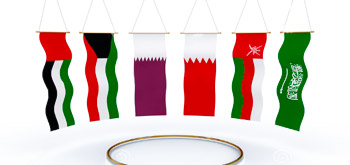
Persian Gulf Cooperation Council
A regional political u n i o n consisting of Arab states of the Persian Gulf, except for Iraq.
Taliban
Taliban is a Sunni fundamentalist movement in Afghanistan. It was founded by Mohammed Omar in 1994.
Wahhabism & Extremism
Wahhabism is an extremist pseudo-Sunni movement, which labels non-Wahhabi Muslims as apostates thus paving the way for their bloodshed.
Kurds
Kurds are an ethnic group in the Middle East, mostly inhabiting a region, which spans adjacent parts of Iran, Iraq, Syria, and Turkey. They are an Iranian people and speak the Kurdish languages, which form a subgroup of the Northwestern Iranian branch of Iranian languages.
NATO
The North Atlantic Treaty Organization is an intergovernmental military alliance based on the North Atlantic Treaty which was signed on 4 April 1949.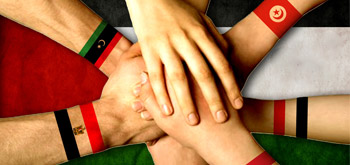
Islamic Awakening
Refers to a revival of the Islam throughout the world, that began in 1979 by Iranian Revolution that established an Islamic republic.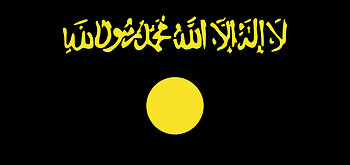
Al-Qaeda
A militant Sunni organization founded by Osama bin Laden at some point between 1988 and 1989
New node





